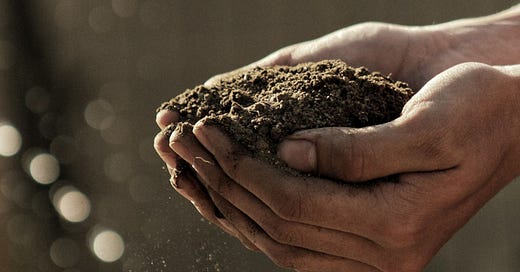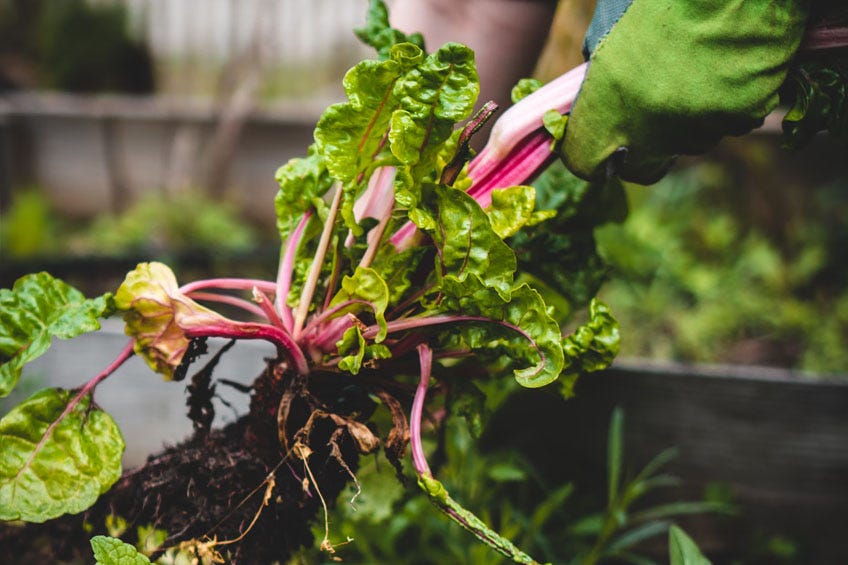✨ My recent post, When Ideas Arrive on the Run, reached 4x more readers than usual. Surprising plot twist! So much gratitude! If you’re new here, welcome. However you found the article, I’m glad you did. Let’s get into Part 2.
If I knew where the good songs were, I’d go there more often. It’s a mysterious condition, much like the life of a Catholic nun. You’re married to a mystery.
—Leonard Cohen
At 9:30 last night, I downloaded a crappy e-book and climbed into bed. After a long work day, I’d had a late run, quick supper, and hot shower. I should have fallen right asleep, but there I was… wide awake with a sub-par book in one hand, and the notes app open on my phone in the other. My mind was alive. Ideas were flowing.
Sometimes inspiration is a lightning strike, here and gone. Other times, it’s a slow-flowing river we watch from shore, dipping our toes in and out. Whatever form they take, insights often arrive like spontaneous gifts, given by an unseen hand.
Do ideas have to be so fickle? Must we wait for them?
What if, through intentional behavior, we could cultivate the conditions that awaken creativity? Is it possible to prepare ourselves to receive ideas, tuning our antennas to the mystical place where, as Cohen put it, “the good songs are?”
Turns out running—like a hot shower before bed—can help us do just that.
Who needs creativity anyway?
The title I downloaded before bed falls into the “penny book” category of tomes that may or may not have been written by AI. I knew it was probably junk, but that didn’t matter. I was gathering dots for my brain to connect later.
I got my money’s worth on page one when the book delivered a thought that got my mind firing and my thumbs tapping. It’s this: creativity is for everyone.
Nobody would argue solving problems requires “creative thinking” and figuring out how to make a meal with what’s left in the fridge is “getting creative.” But ask people if they are creative and they bristle. They believe that rarified air is reserved for artists, poets, and songwriters.
Here’s the thing; creativity is less about making art and more about making sense. It’s noticing connections between things and weaving them into something new. The new thing isn’t always grand or groundbreaking. Sometimes it’s dinner.
The more life asks of us, the more vital innovative thinking becomes. As challenges mount, the question necessarily shifts from identity-based (am I creative?) to process-based (how do I make space for creativity to show up in my life?).
Can we summon ideas on demand?
When I applied to graphic design school (thirty years ago, sheesh), the environment was competitive. Over two quarters, our cohort was whittled from 100 students to 25. To get in, we didn’t just need ideas. We needed good ideas, fast.
Early on, I responded by grinding away for hours at my drafting desk (photoshop was still new, sheesh), or scouring design books for inspiration. These pushes produced ideas, yes, but also many sleepless nights and a fast food-induced cholesterol number no 21 year-old should be rocking.
Then, something interesting happened. I eased up. On frequent breaks, I walked the bustling University District streets, dipping into coffee shops and newsstands. I browsed sections of the library that had nothing to do with art. And when I sat back down to work, the ideas flowed naturally.
Here’s what I learned in 1995 (sheesh): you can’t force inspiration. Striving for insight is like trying to fall asleep; the harder you push, the further away it drifts. But you can show up deliberately and consistently, and that’s where creativity begins.
The brand of showing up I stumbled on in design school isn’t just about discipline. It is a nuanced dance between work and rest, trying and not-trying. In that way, it’s a lot like running. Or gardening.
Forgive the extended metaphor.
I took a shower and bought a poorly-written e-book before bed last night because I had an article to write—the one you’re reading now—and was tilling the soil of my mind with an intentional kind of showing up.
The shower created space between day and night. It let the field lie fallow.
The book was fodder. Dots to connect. It planted seeds.
To cultivate fertile ground for ideas, we have to work the dirt, thinking directly and pragmatically about our challenges. On the flip side, a garden constantly watered, fertilized, and fussed over will not grow well. It needs time to breathe. A successful, sustainable cadence is this: plant seeds, rest soil, harvest, rest soil, repeat.
Running is a similar exercise in equilibrium, of trying and not-trying. Balanced runners modulate their training in a continuous push-pull of effort and relaxation. With that context in mind, here are a few techniques you can use to create the conditions for creativity on the run:
Not-Trying:
Run the same route a few days in a row. This cuts the cognitive load of making decisions, freeing brain space for receiving ideas.
Run without time constraints. Clear the calendar and leave your watch at home. Without the pressure of time, your mind relaxes and creative connections can form naturally in the background.
Run without verbalizing thoughts. Allow your mind to wander freely. If you catch yourself analyzing or attaching words, let go. This creates space for insights to emerge without being filtered through language.
Trying:
Make wild route choices on the fly. Change up your usual surface. Put yourself in liminal spaces. If something makes you uncomfortable, run toward it.
Create time-based challenges. Do an interval workout or set route-based time goals. The focused mental effort of meeting these targets activates problem-solving brain circuits.
Actively articulate problems. Work through challenges verbally. Have a lively conversation with yourself. Speaking problems aloud engages different cognitive pathways than silent contemplation.
There are myriad ways to mix and match trying and not-trying to invite fresh thinking. The simple act of preparing to receive ideas—using any of the half-dozen tactics in Part 1—will prime your mind to be more open.
The Finish Line
The connection between physical activity and creativity is etched in the ancient cells of our muscles. Aristotle paced the colonnades, Thoreau walked in the woods, Cheryl Strayed trekked the wilds.
Movement is a way of listening. In rhythm, our subconscious is stirred. We get closer to the place within all of us where ideas are born.
Run lightly,
-mike
Enjoy what you read here? Become a paid subscriber for just $1 a week.







